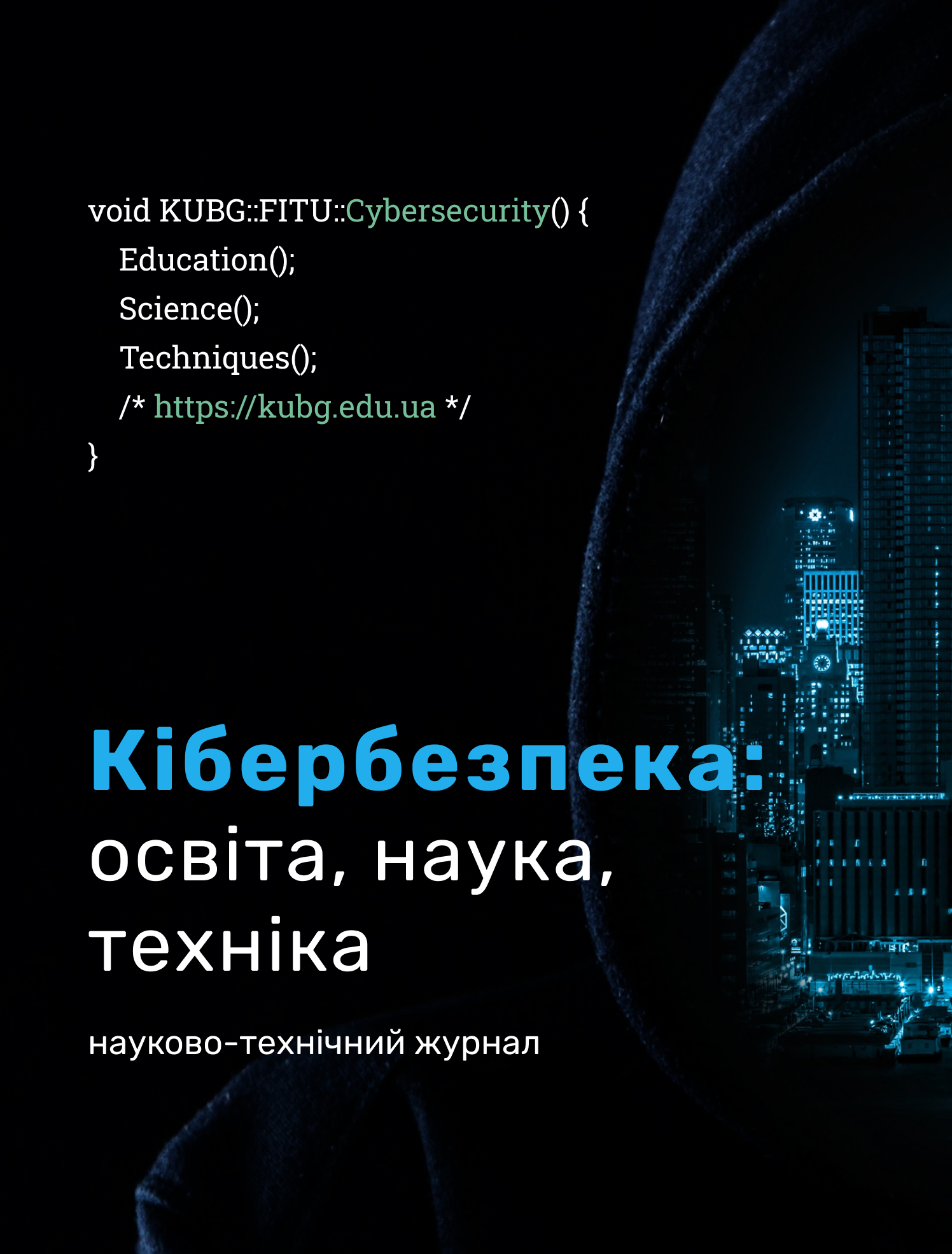DATA PROTECTION AT THE STAGES OF ITS FUNCTIONING
DOI:
https://doi.org/10.28925/2663-4023.2023.21.149161Abstract
Today, computer and information technologies have covered all areas of the economy. For any modern company, information becomes one of the main resources, the preservation and proper management of which is of key importance for business development and reducing the level of various risks. Ensuring information security is an urgent problem today.
Methods of data security depend, among other things, on the state of the data. Taking into account what was said in the article, an attempt was made to consider the methods of data security depending on the data states (data at rest; data being transmitted; used data).
So, for example, the state of inactive data (state of rest) is characterized by methods of security: in the form of the use of various encryption methods, access rights management, for example, such as SealPath, the use of MDM tools (they allow you to limit access to certain corporate programs, block access to a device or encrypt data on a mobile phone or tablet), DLP (data leakage prevention), CASB (cloud access security brokers): These are systems that allow us to apply security policies to the documentation we have in cloud systems, for example, such as Office 365, Box, Salesforce, etc.
For the state of the transmitted data, typical methods of security in the form of application: encryption of e-mail; managed file transfer, such as MFT technology; DLP technologies provide protection because they can detect if sensitive data is being sent outside the organization; CASB (Cloud Access Security Brokers): refers to data transmitted by an untrusted user for this type of data), it may be blocked for download; SealPath technologies; etc.
For the state of the data used, the typical methods of security in the form of application: in a successful case, digital rights protection technologies or IRM are recommended, which is one of the most effective means of data protection, because it combines encryption + permission management + identity control. This security allows documentation to be stored safely in its three states and tracked in any state sequentially.
Downloads
References
NIST SP 800-22rev1a. A Statistical Test Suite for Random and Pseudorandom Number Generators for Cryptographic Applications//National Institute of Standards and Technology Special Publication 800-22rev1a, 2010, -131 p
Protecting the three states of data. https://www.sealpath.com/blog/category/data-protection.
Akhramovych, V., Chehrenets, V., Kotenko, A. (2018). Kompiuterni merezhi. Arkhitektura, proektuvannia, zakhyst. DUT. https://www.dut.edu.ua/ua/lib/1/category/2438/view/1679
Akhramovych, V., & Bilotserkivets, O. (2019). Metodyka pidvyshchennia efektyvnosti zastosuvannia zasobiv zabezpechennia informatsiinoi bezpeky korystuvachiv posluh Internet. U «Ynfrastruktura YKT kak osnova tsyfrovoi эkonomyky».
Akhramovych, V.M., Amelkin, S.V. (2019). Systema zakhystu informatsii pidpryiemstva. Orhanizatsiia sluzhby zakhystu. Suchasnyi zakhyst informatsii, 1, 17-23. http://journals.dut.edu.ua/index.php/dataprotect/article/download/2301/2200
Bohush, V.M., Brovko, V.D., Kobus, O.S., Koziura, V.D. (2022). Tekhnichnyi zakhyst informatsii. Lira -K.
Khoroshko, V. O., Pavlov, I. M., Bobalo, Yu. Ya., Dudykevych, V. B., Opirskyi, I. R., Parkhuts, L. T. (2020). Proiektuvannia kompleksnykh system zakhystu informatsii. Vydavnytstvo Lvivskoi politekhniky.
Zakhyst informatsii v systemakh obminu danymy. https://www.mil.gov.ua/ukbs/zahist-informaczii-v-sistemah-obminu-danimi.html
Informatsiina bezpeka ta zakhyst informatsii. https://www.bitgroup.com.ua/informacijna-bezpeka.php
Lenkov, S.V., Perehudov, D.A., Khoroshko, V.A. (2008). Metodы y sredstva zashchytы ynformatsyy (v 2-kh tomakh). Aryi.
Ostapov, S. E. (2013) Tekhnolohii zakhystu informatsii : navchalnyi posibnyk. KhNEU.
Published
How to Cite
Issue
Section
License
Copyright (c) 2023 Володимир Ахрамович

This work is licensed under a Creative Commons Attribution-NonCommercial-ShareAlike 4.0 International License.




